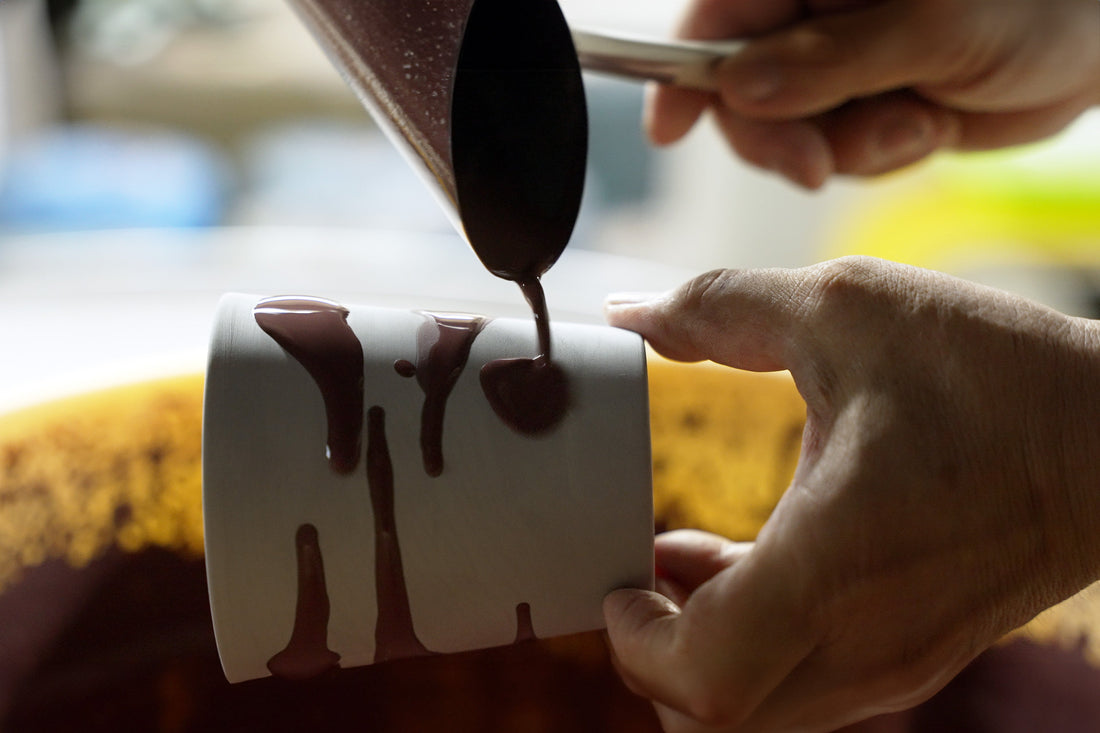
Vol. 1: The Minoyaki Tradition
Share
Traditional Japanese pottery, with its rich history and diverse styles, reflects the cultural and aesthetic values of Japan. Among the many renowned types of Japanese ceramics, Minoyaki, or Mino ware, stands out for its versatility, historical significance, and enduring influence. Originating in the Mino region of Gifu Prefecture, Mino ware has been produced since the 7th century, but it flourished during the Azuchi-Momoyama period (1568–1600) with the rise of the tea ceremony. Mino potters were instrumental in creating some of the most iconic tea ceremony wares, such as Oribe, Shino, and Setoguro, each characterized by distinct glazes, textures, and designs. The region’s abundant natural resources, including high-quality clay and wood for kilns, allowed Mino ware to evolve into a highly refined art form, celebrated for its balance of functionality and beauty.
In contrast to other famous Japanese pottery styles, such as Bizen ware and Shigaraki ware, Mino ware is distinguished by its diversity and adaptability. Bizen ware, from Okayama Prefecture, is known for its unglazed, earthy appearance, which results from the natural effects of wood firing, while Shigaraki ware, from Shiga Prefecture, is celebrated for its rustic, textured surfaces and warm hues. Mino ware, however, embraces a wide range of techniques and aesthetics, from the bold, asymmetrical designs of Oribe ware to the subtle, milky glazes of Shino ware. This versatility has made Mino ware a favorite among tea masters and collectors alike, as it embodies both tradition and innovation. Unlike the more restrained and naturalistic styles of Bizen and Shigaraki, Mino ware often features intricate patterns, vibrant colors, and experimental forms, reflecting the dynamic spirit of its creators.
The history of Mino ware is deeply intertwined with the cultural and social changes of Japan. During the 16th century, the rise of the tea ceremony under the influence of Sen no Rikyū and other tea masters spurred demand for unique and expressive ceramics. Mino potters responded by developing new glazing techniques and styles, such as the green copper glaze of Oribe ware and the crackled white glaze of Shino ware. These innovations not only elevated Mino ware to national prominence but also influenced the broader trajectory of Japanese ceramics. Today, Mino ware continues to be a vital part of Japan’s ceramic tradition, with contemporary artisans preserving ancient techniques while exploring new artistic possibilities.
One such artisan is Shigemichi Tabata, a leading figure in the Minoyaki tradition, whose work exemplifies the harmonious blend of ancient craftsmanship and modern design. Tabata’s pieces often feature the classic forms and glazes of Mino ware, but with a contemporary twist that appeals to modern sensibilities. His ability to juxtapose traditional elements, such as the use of kurotsuchi (black clay), with sleek, minimalist designs, has earned him widespread acclaim. Through his work, Tabata not only honors the legacy of Mino ware but also ensures its relevance in the 21st century, bridging the gap between past and present. In doing so, he embodies the enduring spirit of Minoyaki, a tradition that continues to inspire and captivate.